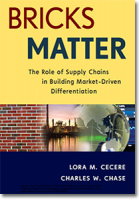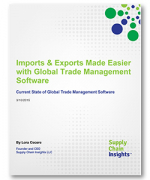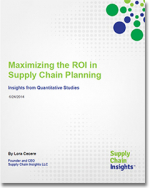Talent: The Future Supply Chain’s Missing Link
In the next decade, talent will be the missing link in the supply chain. While companies today are active in college recruiting and mentoring high-performance talent, many are unaware of the sea change that is happening in talent management.
No supply chain leader will debate the importance of supply chain talent; they know that it is critical.
Yet, we find that most companies are unaware of the current state and the criticality of immediate supply chain talent issues.
It is the dawn of a new era. Much to their chagrin, when companies go to the market to recruit, they are finding that the competition for supply chain talent has never been tougher. They simply are not able to find supply chain talent to backfill critical jobs.
In our study, we find five high-level findings that should be “stay awake issues” for the supply chain leader.
- Opportunity for Improvement. In this study, more companies rate themselves as worse than their peer group in managing supply chain talent. The ratio is 2:1. In the study, when companies were asked to self-assess their capabilities to manage supply chain talent, 17% self-rated that they perform better than their peer group while 34% reported that they do worse than their peers.
- High Turnover. There is currently a 15% turnover of supply chain employees. We believe it is increasing. In the study, 46% of companies attempt to hire from within the company and 17% fill roles primarily through recruiting talent from other companies.
- Shortage of Talent. It is not easy to fill an open position in the open market for supply chain management due to current dynamics of demand and supply. The pain is more critical. The average company in the study has four positions open for five months. The most difficult positions to fill are in the areas of planning that require both a technical mastery of technology and an organizational understanding of the business drivers.
- Stiff Competition for College Graduates. Today, there is a 6:1 demand to supply ratio for new college graduates in the supply chain field.ii Competition is intense and there is a lot of effort to attract the best and brightest.
- Working on the Right Stuff? The current focus is on recruiting college graduates and high-performing talent. Less attention is being given to middle management where the shortage is the highest (see figure 2). Only 23% of companies responding to the study have a planned cross-functional training program for existing employees. This study points out the need for cross-functional skill development for mid-management supply chain leaders.

Take the latest Supply Chain Talent Survey
For your participation in this survey, Lora Cecere, Supply Chain Insights Founder & CEO, will provide a free one hour consultative call with you and your organization to review the results and discuss your own talent strategies.
Take Your Supply Chain Talent Survey
What’s Related




Favorites





